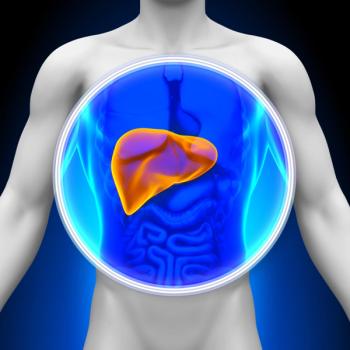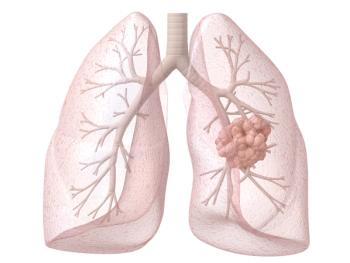
Oncology NEWS International
- Oncology NEWS International Vol 7 No 8
- Volume 7
- Issue 8
Oncologists Split on CSF Use in Older AML Patients
Use of hematopoietic colony-stimulating factors (CSFs) following induction and consolidation chemotherapy for elderly patients with acute myeloid leukemia (AML) is a controversial area. Studies have shown that CSFs can decrease the likelihood and/or shorten the duration of therapy-related neutropenic complications when given following induction chemotherapy.[1-7]
Use of hematopoietic colony-stimulating factors (CSFs) following induction and consolidation chemotherapy for elderly patients with acute myeloid leukemia (AML) is a controversial area. Studies have shown that CSFs can decrease the likelihood and/or shorten the duration of therapy-related neutropenic complications when given following induction chemotherapy.[1-7]
The two CSFs, granulocyte colony-stimulating factor (G-CSF, filgrastim, Neupogen) and granulocyte macrophage colony-stimulating factor (GM-CSF, sargramostim, Leukine, Prokine), recently received FDA approval for use as adjunctive therapy in leukemia patients. However, the high cost of CSFs and the potential stimulation of leukemic cells in AML patients have raised concerns about their use in this setting.[8]
In 1994, the American Society of Clinical Oncology (ASCO) published guidelines stating that caution was recommended for the use of CSFs in patients with AML due to lack of evidence supporting beneficial effects on clinical endpoints such as duration of hospitalization, incidence of severe infection, complete response rates, and survival, as well as concerns over leukemic stimulation.[9]
In 1996, based on the results from six clinical trials of CSF use for patients with myeloid leukemias reported between 1994 and 1995, ASCO guidelines for the use of CSFs in patients with AML were revised.[10] The new guidelines suggested that primary administration of a CSF could be used after completion of induction chemotherapy in patients 55 years of age or older.
In 1997, the ASCO Health Services Committee surveyed the ASCO membership to assess patterns of CSF use for elderly AML patients following the publication of the revised ASCO CSF guidelines. The preliminary results were presented (by CLB) at the 1998 ASCO annual meeting at the podium session on health outcomes.
The survey, accompanied by a cover letter explaining that responses would be used to evaluate the impact of the ASCO guidelines, was mailed to a random sample of 1,500 American oncologists and hematologists who practice medical oncology.
Survey Questions
Survey recipients were asked the extent to which they preferred to administer CSFs to prevent or treat neutropenic complications associated with induction or consolidation chemotherapy in older AML patients (Table 1).
Other questions focused on the respondents sociodemographics, specifically their medical specialty (oncology, hematology, or hematology/oncology); date of medical school graduation; medical practice setting (fee-for-service, academic, or HMO); number of years in practice (less than or more than 3 years); and average weekly new cancer patient volumes (more than five new cancer patients or less than five new cancer patients).
The response rate for the 1997 survey was 60.2%. Over half of the responding physicians practiced in fee-for-service settings, a third in academic settings, and 14% in HMO settings. Almost a quarter of the respondents either worked with formal CSF guidelines or practiced in a setting where guidelines were perceived as influential.
The survey showed a split among physicians in their support for CSF use following induction chemotherapy, with 40.4% of physicians saying they "always" or "usually" used a CSF following induction chemotherapy and 42.2% saying they "rarely" or "never" used a CSF in the same clinical scenario.
There was more support for CSF use during consolidation chemotherapy, with 48.5% saying they "always" or "usually" supported such use vs 32.2% saying they "rarely" or "never" used CSFs in this setting (P < .05).
Timing of CSF
Of the respondents supporting CSF use following induction chemotherapy, 42.97% said they favored administration of CSF within 24 hours of completing chemotherapy; 35.72% after reviewing a bone marrow biopsy demonstrating marrow aplasia; 7.6% as soon as the patient became neutropenic; and 13.7% when the patient became both neutropenic and febrile.
The survey showed that physicians practicing in fee-for-service settings were more likely to prefer CSF use (P = .003) than physicians practicing in academic settings or HMO settings (Table 2).
Physician specialty was another significant factor associated with variations in CSF use. Specialists in hematology or hematology/oncology were more likely to have a stronger preference for CSF administration than physicians practicing only oncology.
Debate continues to surround the use of CSFs following induction and consolidation chemotherapy. Support for its administration in elderly patients with AML was modest at best in the 1996 ASCO CSF evidence-based guidelines.[10] This uncertainty was reflected by the survey, which showed that 40% of physicians support CSF use following induction chemotherapy, while an equal percentage do not. Thus, physicians appear to be divided as to whether or not CSF for elderly patients with AML is appropriate.
Of note was the finding of greater support for CSF use in the setting of AML by hematologists (vs oncologists). However, this finding may be due to the greater likelihood that specialists in hematology/oncology are more familiar with recent publications supporting CSF use following induction chemotherapy.
In addition, physicians practicing in fee-for-service type settings had a greater propensity for using CSFs in AML than did those in academic settings or in HMOs. This is similar to findings reported previously for other clinical situations (ie, for solid tumors and lymphomas).[11] This finding reflects the restrictions placed on CSF use in the academic and HMO settings, as well as the tendency in both settings to follow proprietary guidelines that actively support dose reduction as the first option for secondary prophylaxis against febrile neutropenic complications.
Updated CSF practice guideline efforts are underway, and a repeat ASCO survey of physician use of CSFs is planned. It will be of interest to see if physician support for CSF use increases or decreases over time in the setting of AML in older patients.
References:
1. Rowe JM, Andersen JW, Mazza JJ, et al: A randomized placebo-controlled phase III study of granulocyte macrophage colony stimulating factor in adult patients (> 55 to 70 years of age) with acute myelogenous leukemia: A study of the Eastern Cooperative Oncology Group (E1490). Blood 86:457-462, 1995.
2. Heil G, Hoelzer D, Sanz MA, et al: A randomized double-blind placebo-controlled phase III study of filgrastim in remission induction and consolidation therapy for adults with de novo acute myeloid leukemia. Blood 90:4710-4718, 1997.
3. Stone RM, Berg DT, George SL, et al: Granulocyte-macrophage colony-stimulating factor after initial chemotherapy for elderly patients with primary acute myelogenous leukemia: Cancer and Leukemia Group B. N Engl J Med 332:1671-1675, 1995.
4. Lowenberg B, Suciu S, Zittoun R, et al: Granulocyte macrophage colony stimulating factor during as well as after induction chemotherapy in elderly patients with acute myeloid leukemia: The EORTC-HO VON phase III trial (AML 11). Blood 86:433a, 1995.
5. Witz F, Harousseau JL, Sadoun A, et al: Granulocyte macrophage colony stimulating factor during and after remission induction treatment for elderly patients with acute myeloid leukemia. Blood 86:512a, 1995.
6. Zittoun R, Suciu 5, Mandelli F, et al. Granulocyte macrophage colony stimulating factor associated with induction treatment of acute myelogenous leukemia: A randomized trial by the European Organization for Research and Treatment of Cancer Leukemia Cooperative Group. J Clin Oncol 14:2150-2155, 1996.
7. Godwin JE, Kopecky K, Head DR, et al: A double-blind placebo-controlled trial of granulocyte colony stimulating factor in elderly patients with previously untreated acute myeloid leukemia: A Southwest Oncology Group Study. Blood 91:3607-3615, 1998.
8. Lowenberg B, Touw IP: Hematopoietic growth factors and their receptors in acute leukemia. Blood 81:281-284, 1993.
9. American Society of Clinical Oncology: American Society of Clinical Oncology recommendations for the use of hematopoietic colony stimulating factors: Evidence based clinical practice guidelines. J Clin Oncol 12:2471-2508, 1994.
10. The American Society of Clinical Oncology: Update of recommendations for the use of hematopoietic colony stimulating factors: Evidence-based clinical practice guidelines. J Clin Oncol 14:1957-1960, 1996.
11. Bennett CL, Smith TJ, Weeks JC, et al: Use of hematopoietic colony stimulating factors: The American Society of Clinical Oncology survey. J Clin Oncol 14:2511-2510, 1997.
Articles in this issue
over 27 years ago
Taxol, Gemzar, Other Therapies Studied in Metastatic Bladder Cancerover 27 years ago
Medicare+Choice Opens Certificationover 27 years ago
Consumer Advocates Win a Voice in NCI Programsover 27 years ago
Paclitaxel Shows Antiangiogenesis Effects in Mouse Modelover 27 years ago
Henney Nominated for FDA Commissionerover 27 years ago
FDA Approves ImageChecker Computer Systemover 27 years ago
Pittsburgh Seeks Breast Cancer Patients for Study on Copingover 27 years ago
Octreotide Imaging Improves Staging of Hodgkin’s Diseaseover 27 years ago
Tobacco Contributions Are Linked to Votes Against Tobacco BillNewsletter
Stay up to date on recent advances in the multidisciplinary approach to cancer.
































































































